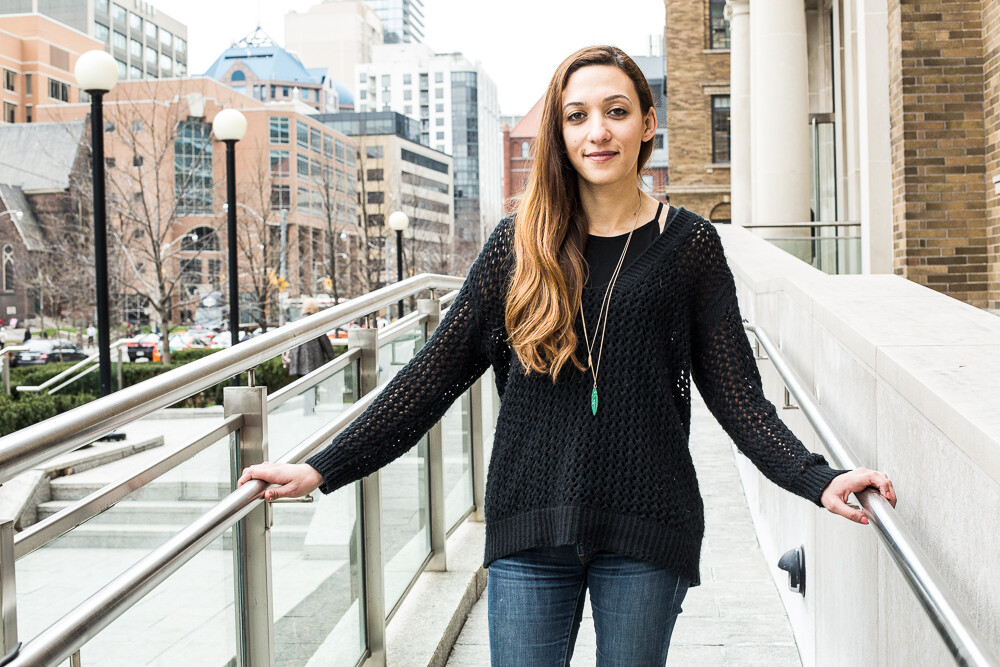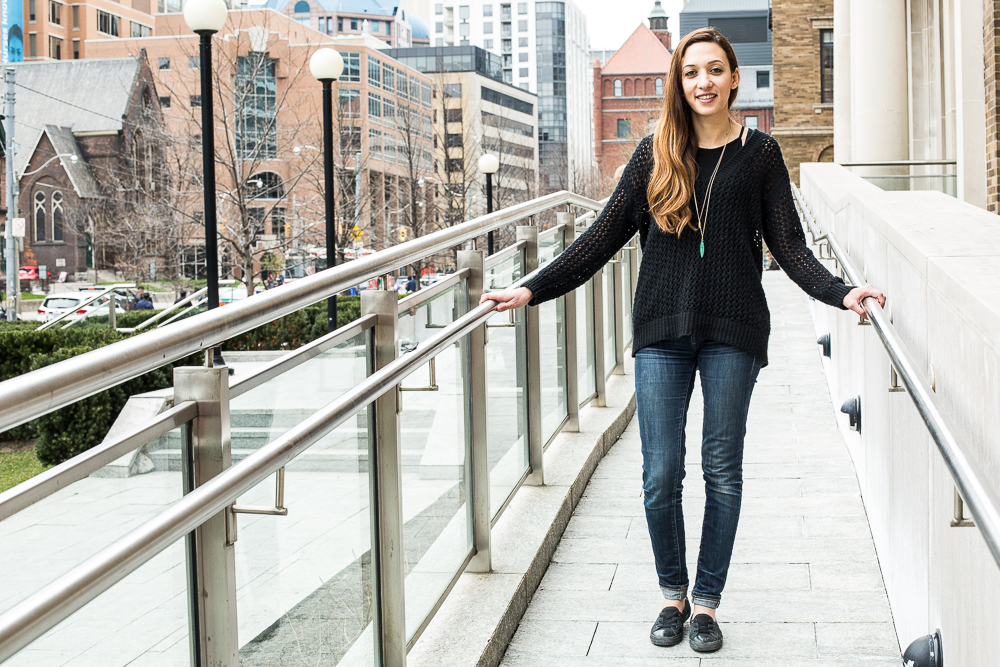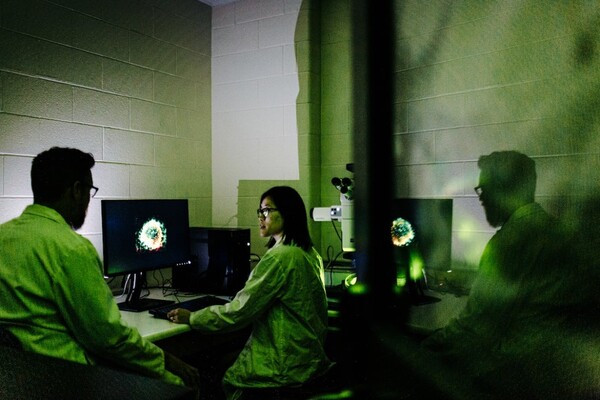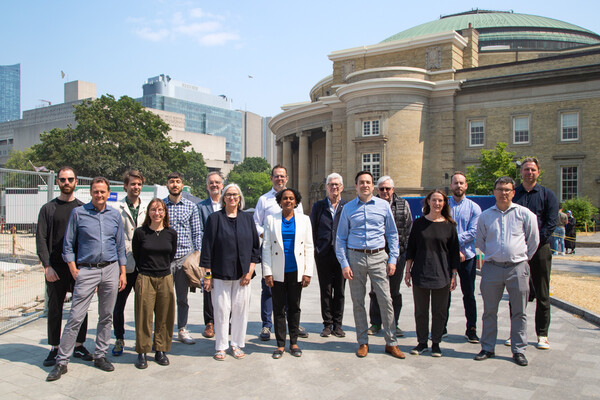Translational Research Bridges Science and Society

Carolyn Morris
 Translational research master’s student Samar Mouaaz wants to know if a specialized diet — high in fat, low in carbs — could help treat cancer patients, alongside chemotherapy and other interventions. This “ketogenic” diet forces the body to switch from using glucose as its primary source of energy to running on ketones derived from fat. Cancer cells are not as efficient at using ketones as energy and are more likely to “starve”. In mice, the diet has been shown to help reduce cancer growth. But mice are not men.
Translational research master’s student Samar Mouaaz wants to know if a specialized diet — high in fat, low in carbs — could help treat cancer patients, alongside chemotherapy and other interventions. This “ketogenic” diet forces the body to switch from using glucose as its primary source of energy to running on ketones derived from fat. Cancer cells are not as efficient at using ketones as energy and are more likely to “starve”. In mice, the diet has been shown to help reduce cancer growth. But mice are not men.
So how to bridge that gap from the research lab to clinical care?
It’s the question Mouaaz and the other 16 master’s students in the Faculty of Medicine’s new Translational Research Program (TRP) are tackling. On the one hand, scientists are making key discoveries and publishing their research findings in peer-reviewed journals. On the other, clinicians and patients who could benefit from the insights all too often don’t even hear about them.
“We’re helping develop a new type of professional,” says Professor Joseph Ferenbok, director of the program. “They’re problem-solvers, entrepreneurs, networkers, and risk takers — bridge builders who may be trained in the language of science, but not always found in the research lab. They translate science and design solutions to existing health needs and problems.”
The first group of TRP graduate students includes medical doctors, clinical residents, researchers, technicians and recent graduates — most, but not all, have a strong grounding in science. They’re immersed in the territory between the research lab and the community through workshops focused on intellectual property, entrepreneurship, project management and the economics of healthcare, as well as mentorship and networking opportunities. Students develop capstone projects, and work toward implementing real change in the health care system.
For TRP student Dr. Jussi Tikkanen, an internal medicine and respirology specialist from Finland who has been working as a research fellow at the Toronto General Hospital’s Lung Transplant Clinic, real change would mean better outcomes for transplant recipients.
Along with other U of T researchers, Tikkanen has found that when a donor and recipient have a mismatch of a particular human antigen target called HLA-DQ, the recipient is at much greater risk of developing chronic lung allograft dysfunction — the leading cause of death following a lung transplant. While there are many variations of this antigen, the most common types are very common, so you could theoretically match donors and recipients in a similar way as blood types. To test whether this would be feasible, Tikkanen and his co-workers developed an algorithm using the lung transplant waiting list from 2011 to 2014.
“We knew which recipient got which donor lungs,” he explains. “So we worked backwards and made a virtual reality that re-matched them. We still have to look at blood-group compatibility first, as well as the size of the lungs. And it’s important to consider how sick the patients are on the waiting list, and treat the most urgent cases first. Then we added the DQ antigen matching.”
He found that without increasing waiting list mortality or time, they could improve the HLA-DQ matching by 50 per cent. If implemented, Tikkanen thinks it has the potential to increase survival rates substantially. The next step of his project will be implementing this matching in clinical practice, which he hopes to do by next year.
“For me, it’s so meaningful to bring the research over to clinical practice, instead of just continuing the publication cycle,” he says. “This way, you’re really impacting health — not just increasing your ‘impact factor’.”
It’s this desire to make a difference that drew Mouaaz to the program. She has a bachelor’s degree in biotechnology and molecular biology and six years’ experience as a technician in cancer research laboratories. While she wanted to stay in science, she also wanted to see her work have a tangible effect.
In addition to trying to set up her own research experiments on the ketogenic diet, Mouaaz is expanding her scope. Since this diet is already recommended for certain epilepsy patients, she plans to reach out to epilepsy dietitians to find out about any side effects or complications clinicians would have to consider. She’s also mining through thousands of data points collected on cancer patients’ diets and reading up on research studies in the area.
“Before doing this graduate program, I would be only looking at animal models and seeing whether I could set up my own experiment and publish the results,” she says. “I would still love to do that, but now the project will also include a diet plan and information on how to monitor patients. I want to pull those practical details together, to get the project to the point where it could really move ahead.”
Ferenbok is eager to see the projects progress — and also to welcome a new and diverse group of aspiring translational researchers next fall (registration for the program is open until June 1). While many will have a background in science and medicine, others might be from other disciplines, like engineering, social sciences and even drama or music. He’s optimistic that this new kind of creative professional will be able to bridge the gap between discovery research and tangible benefits to human health.
News


